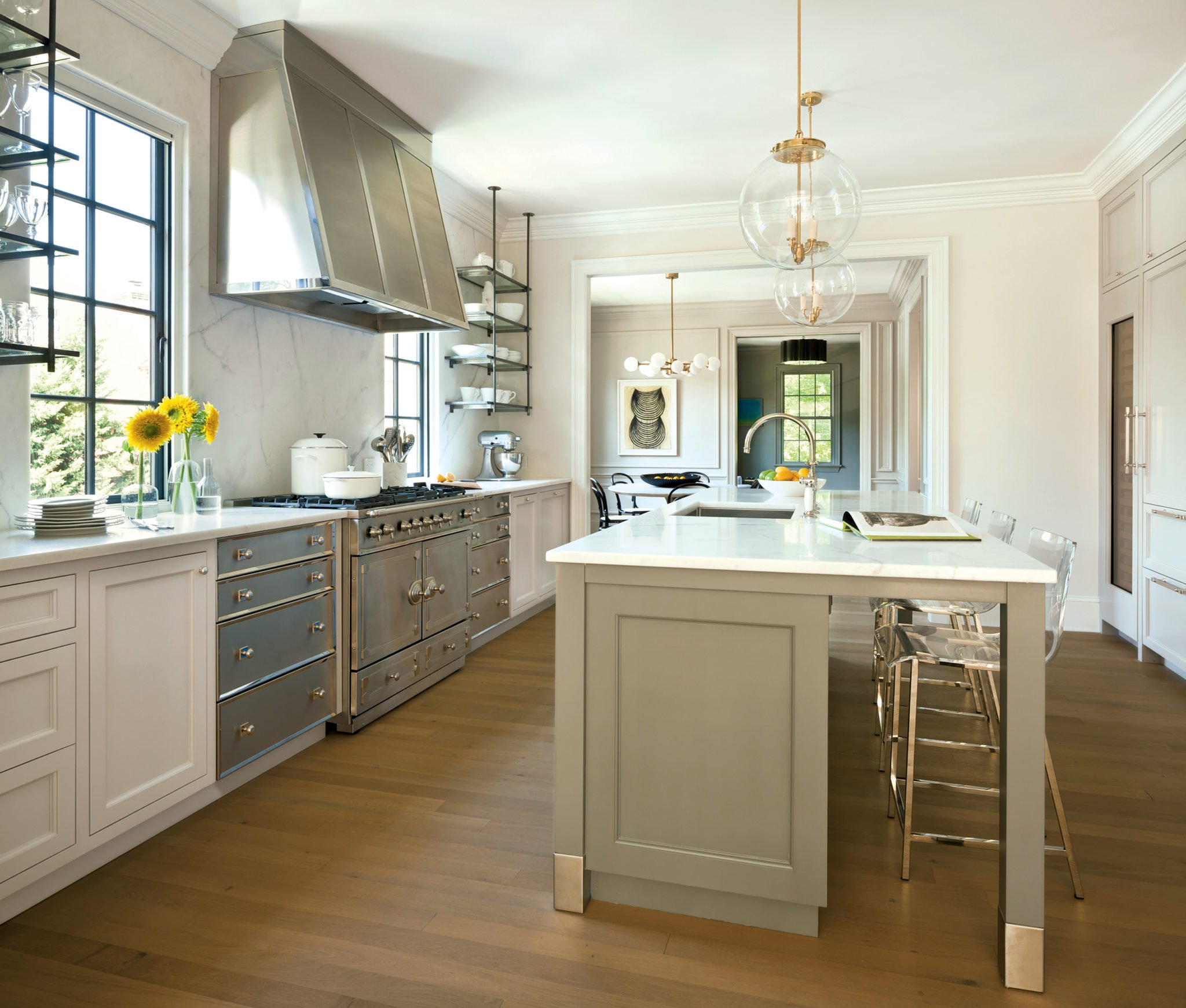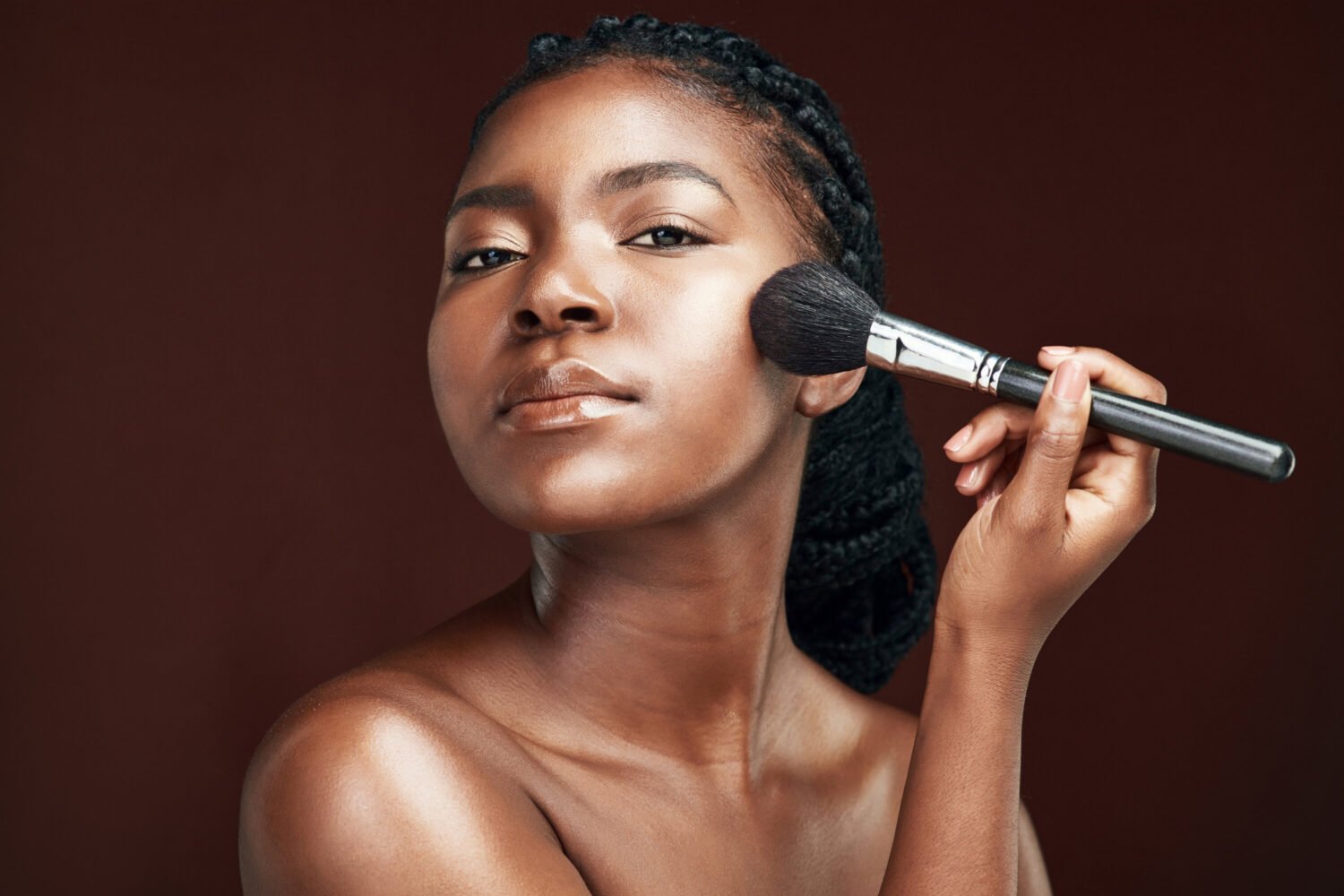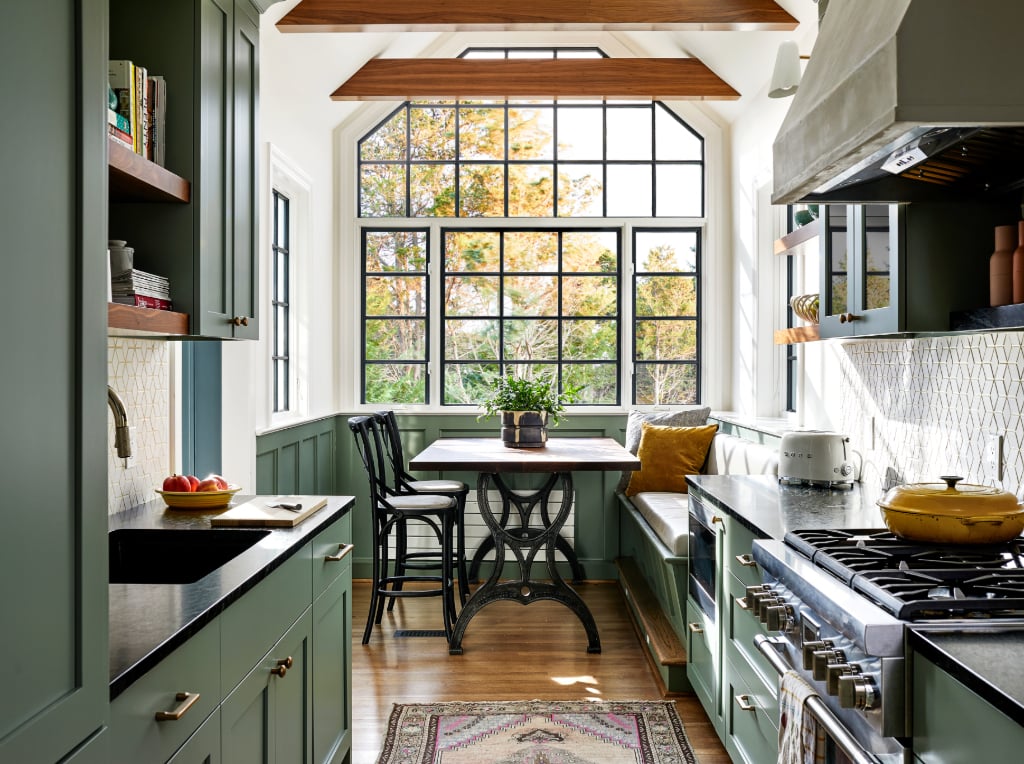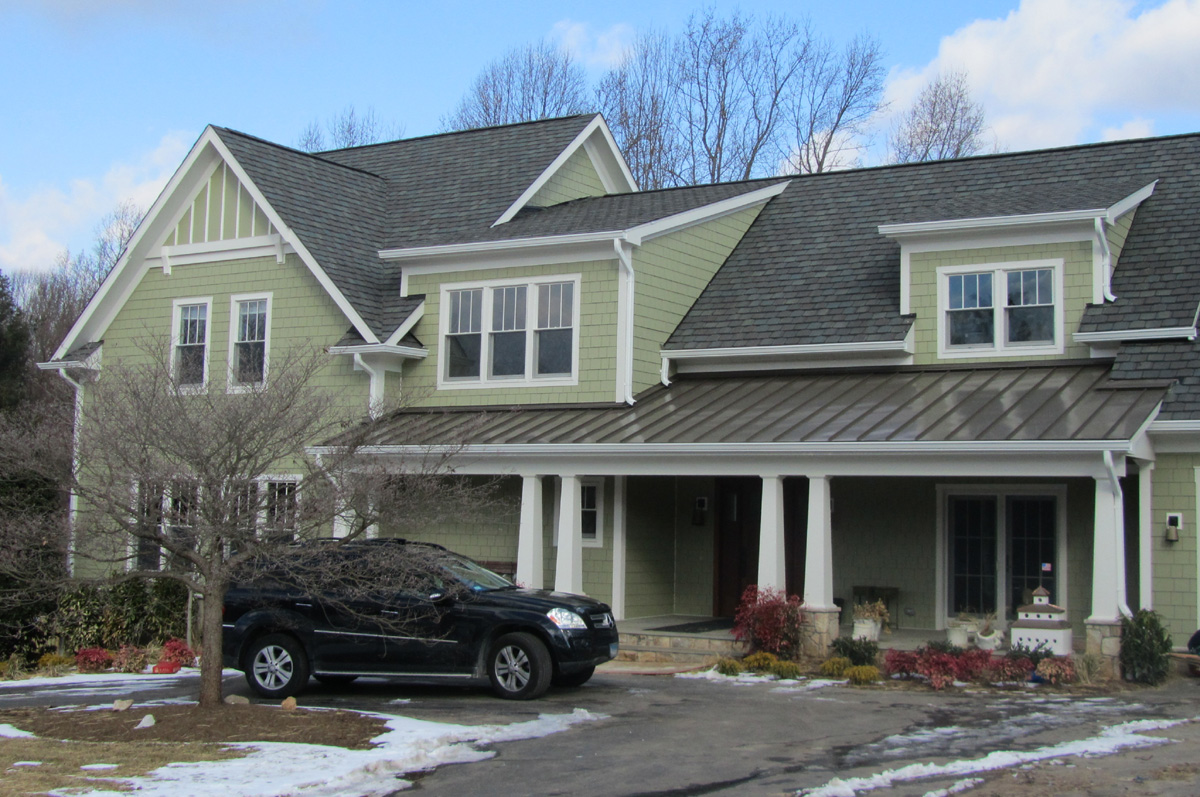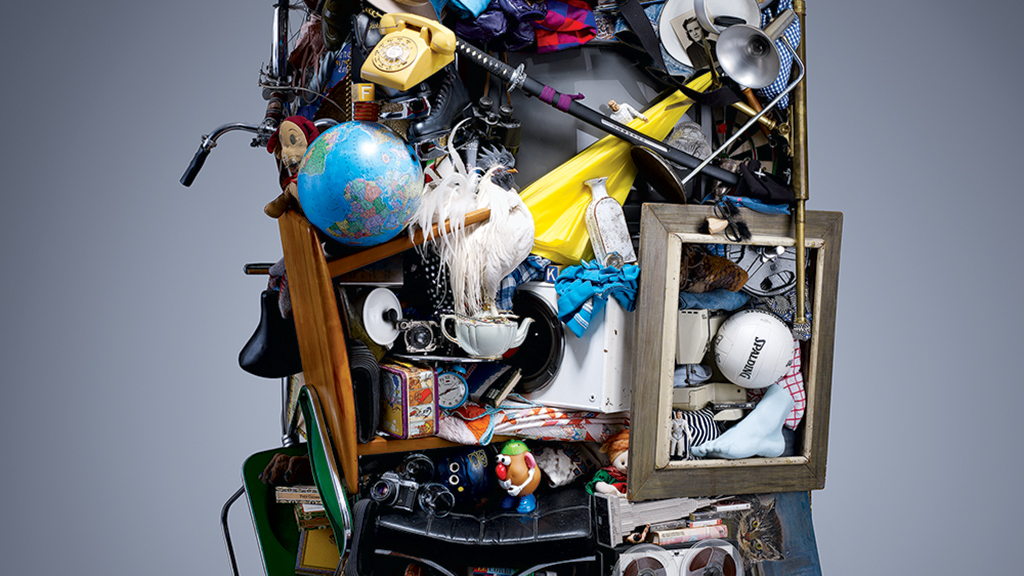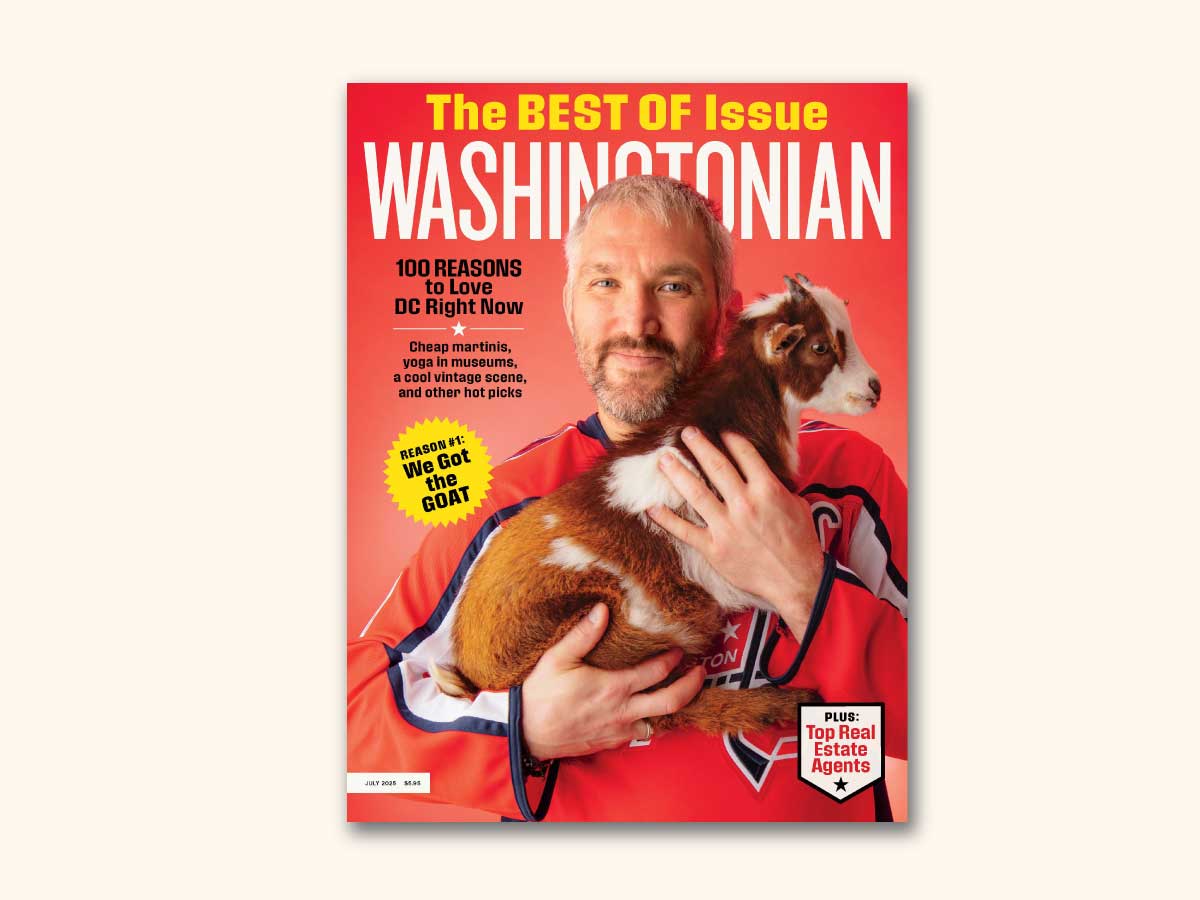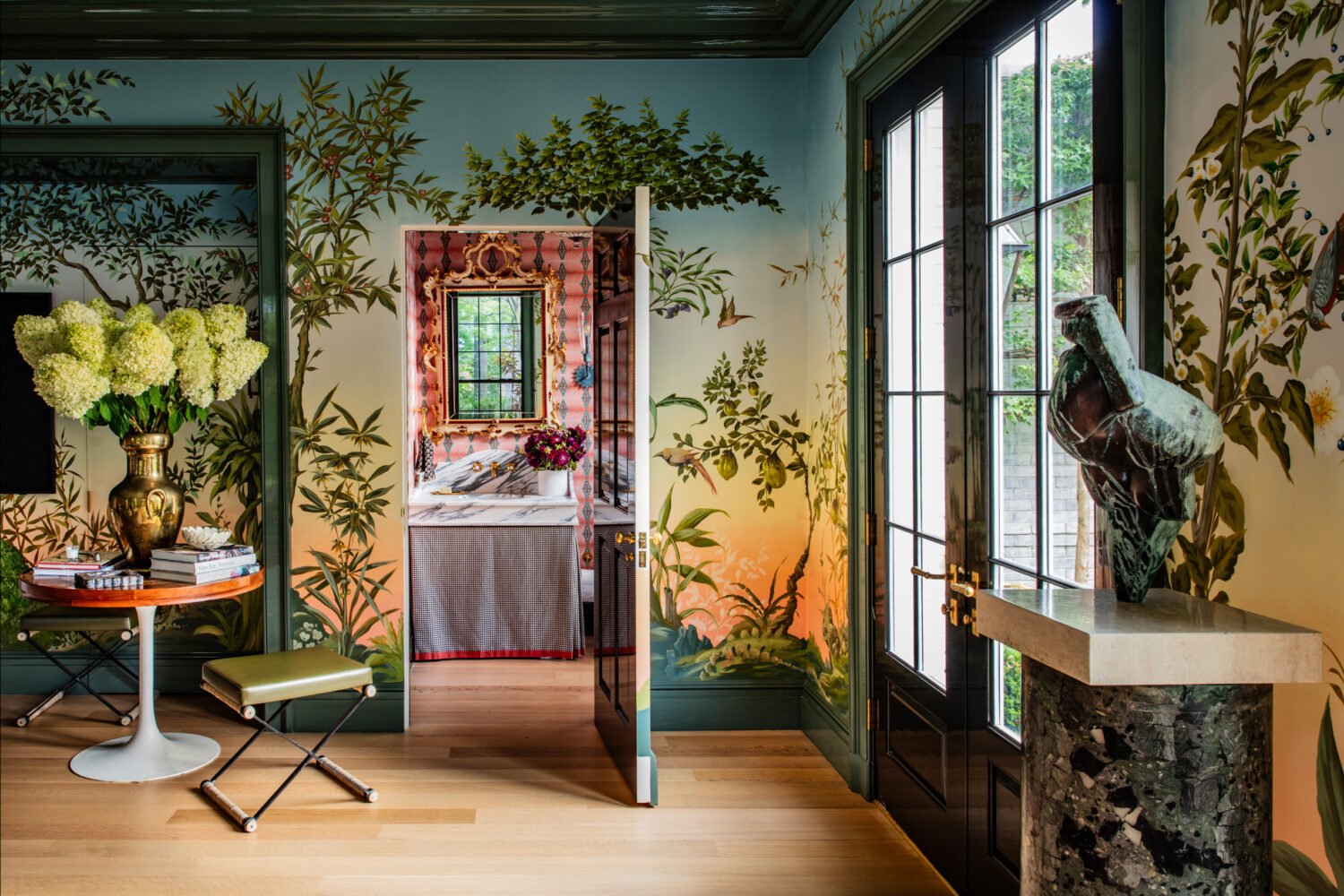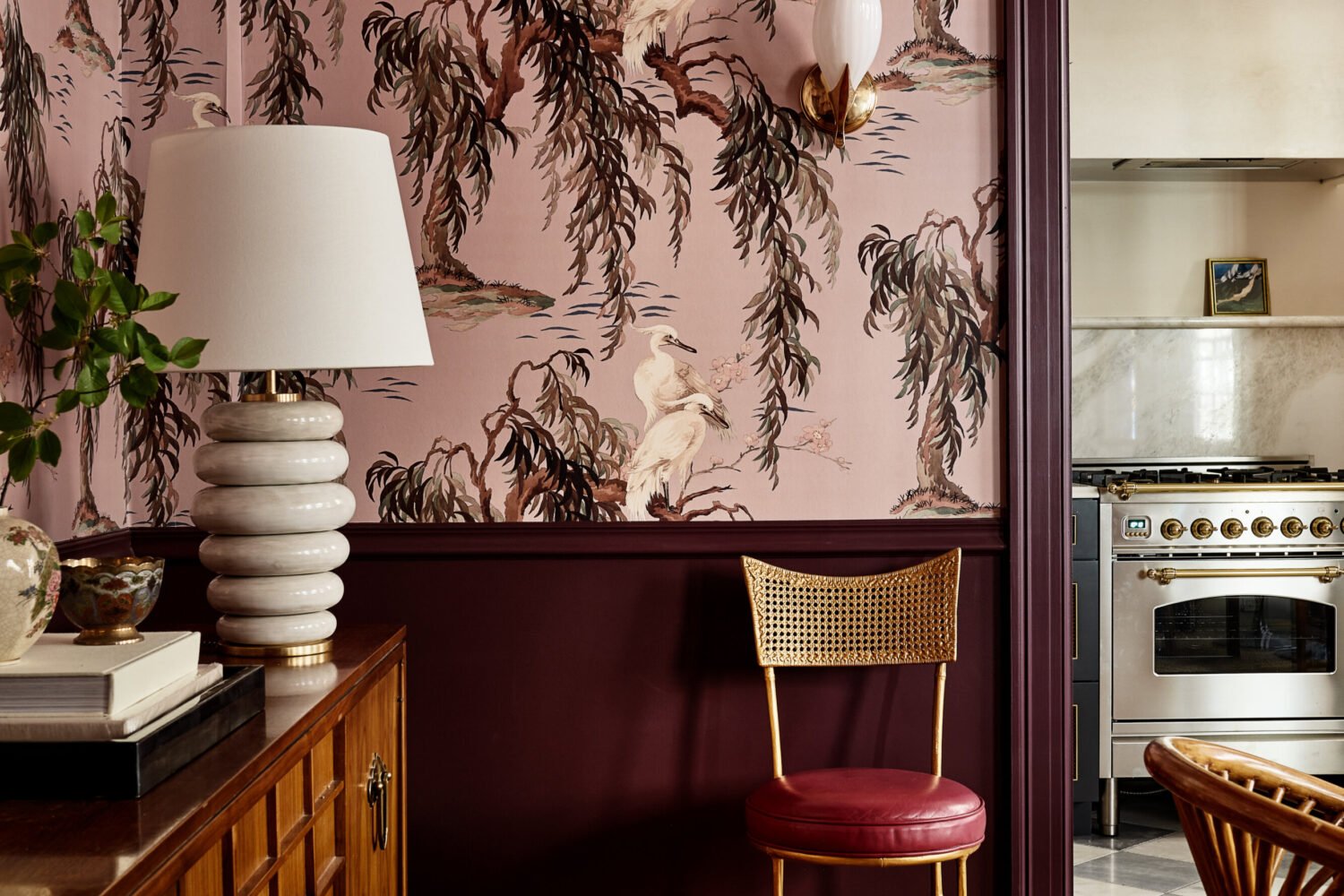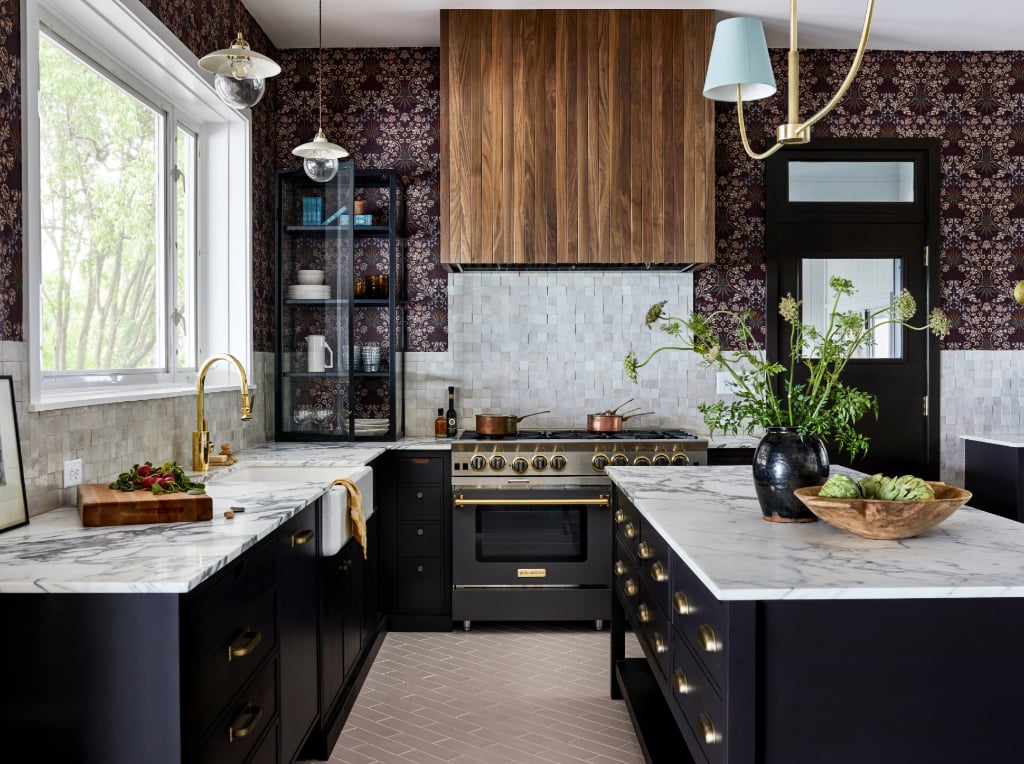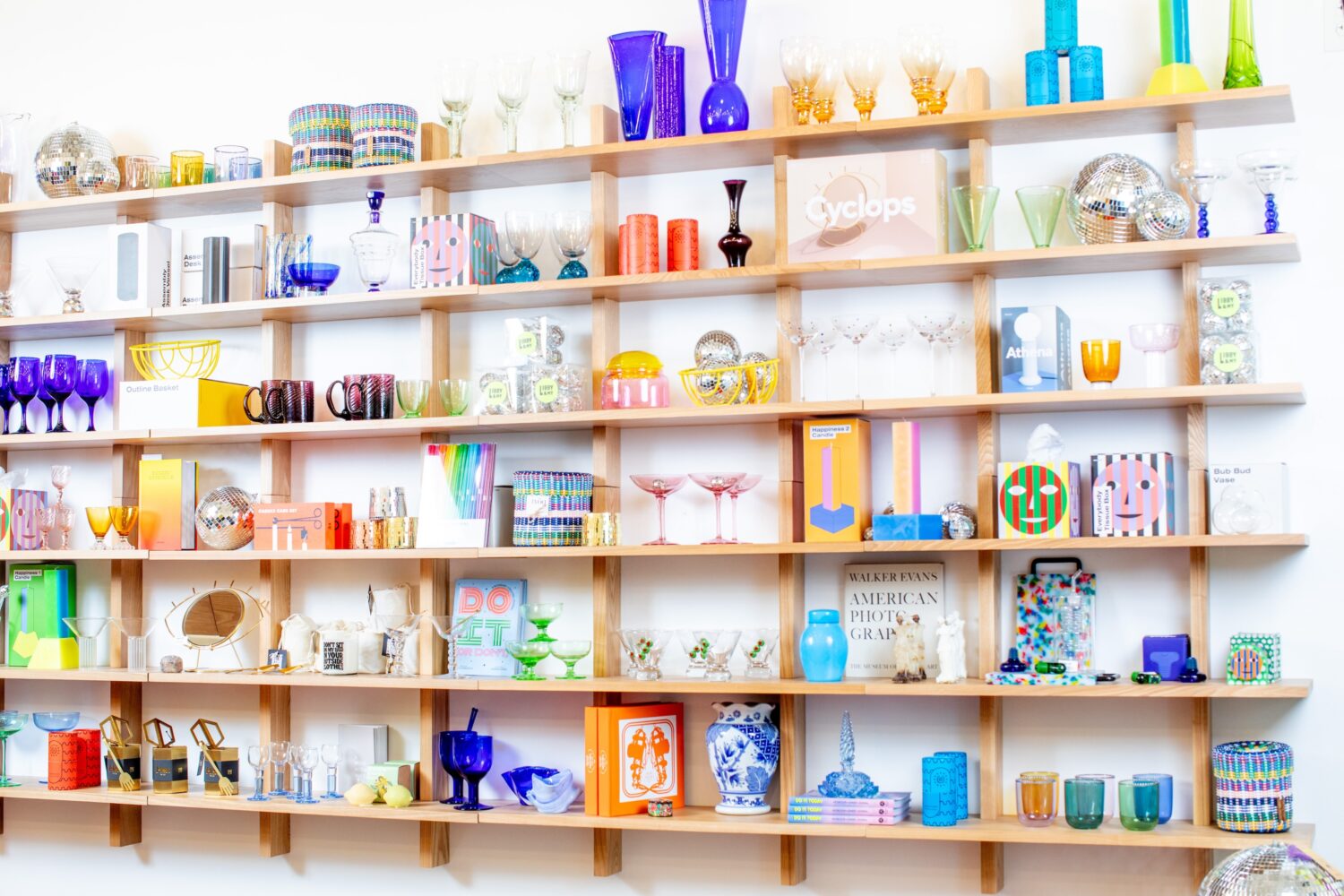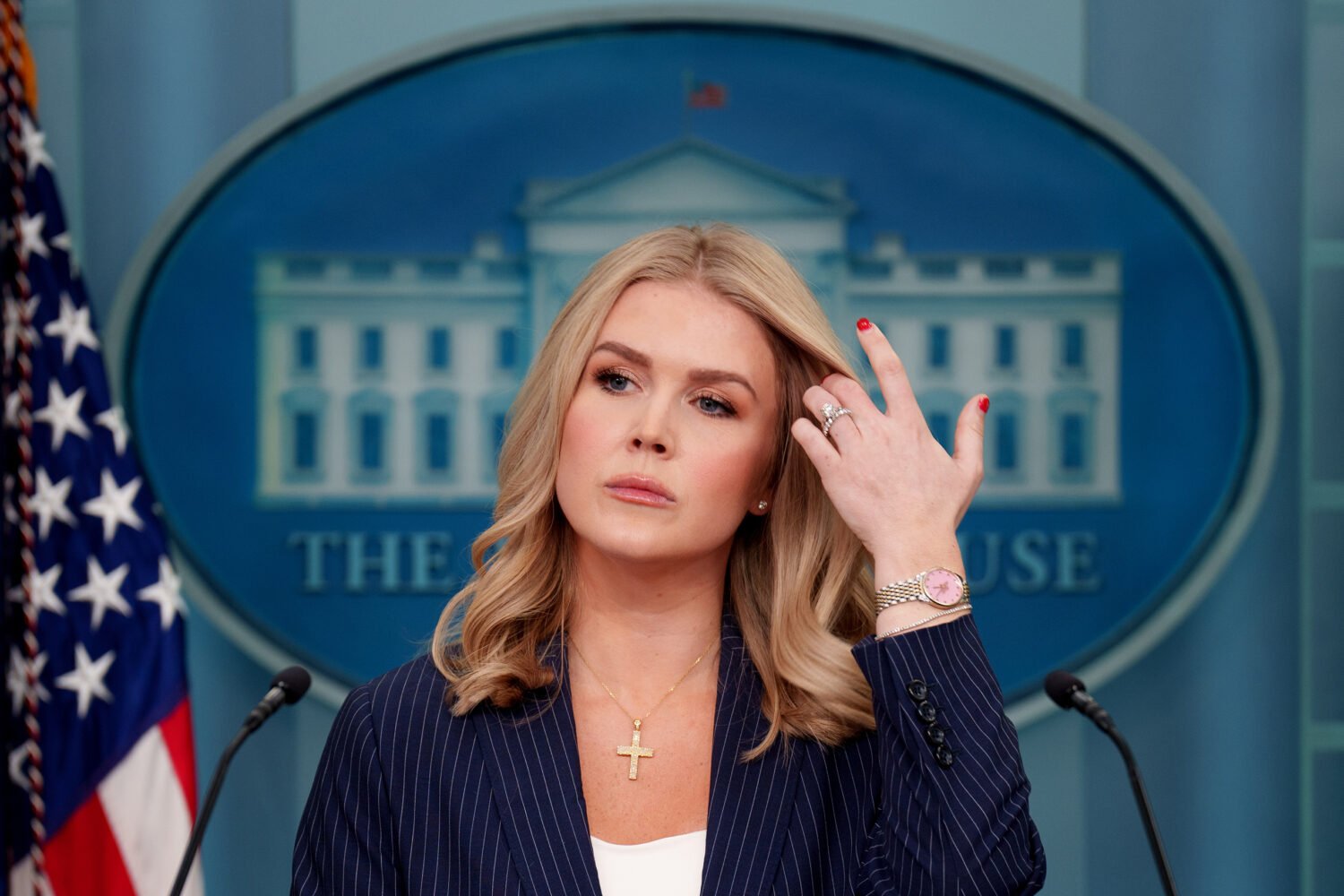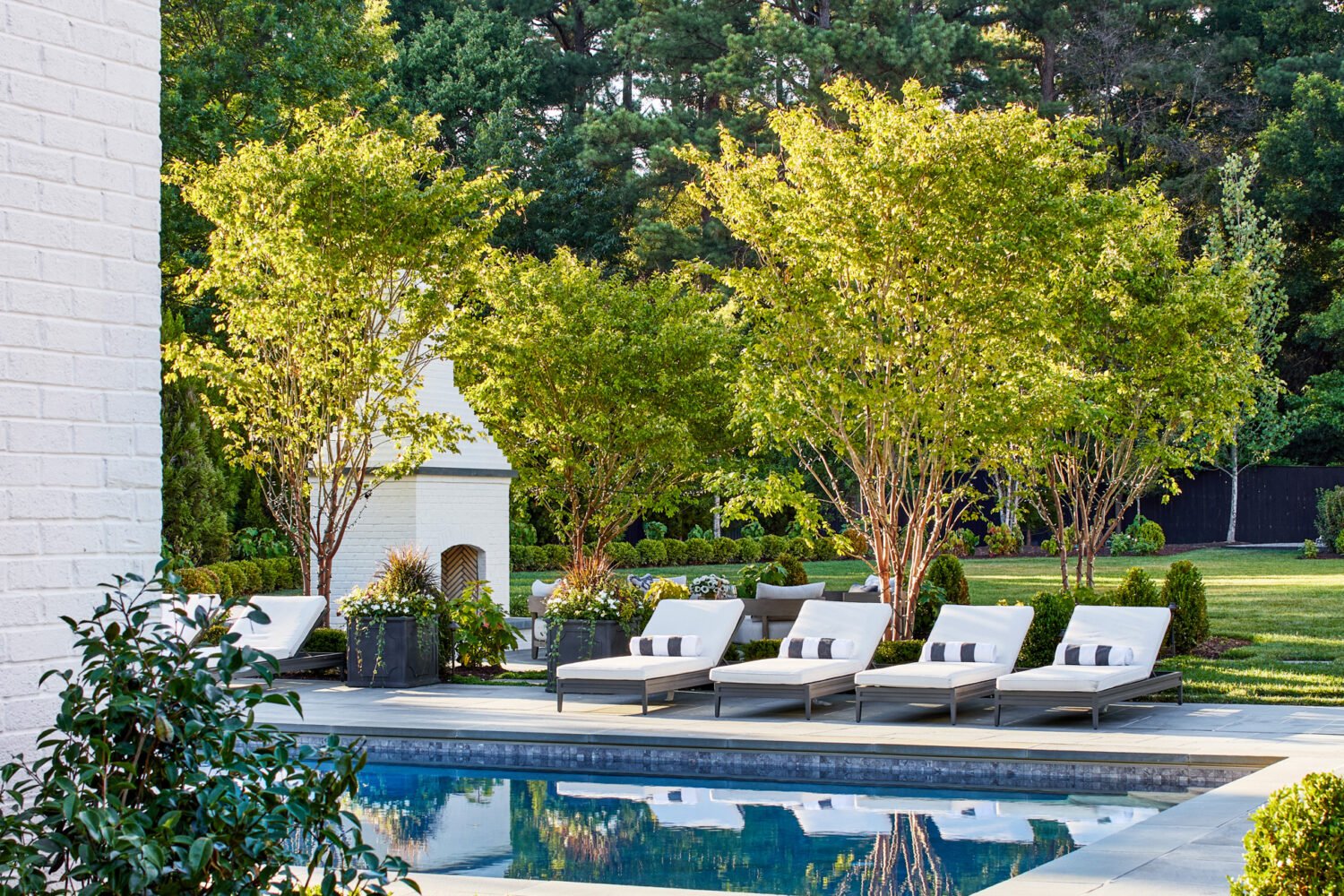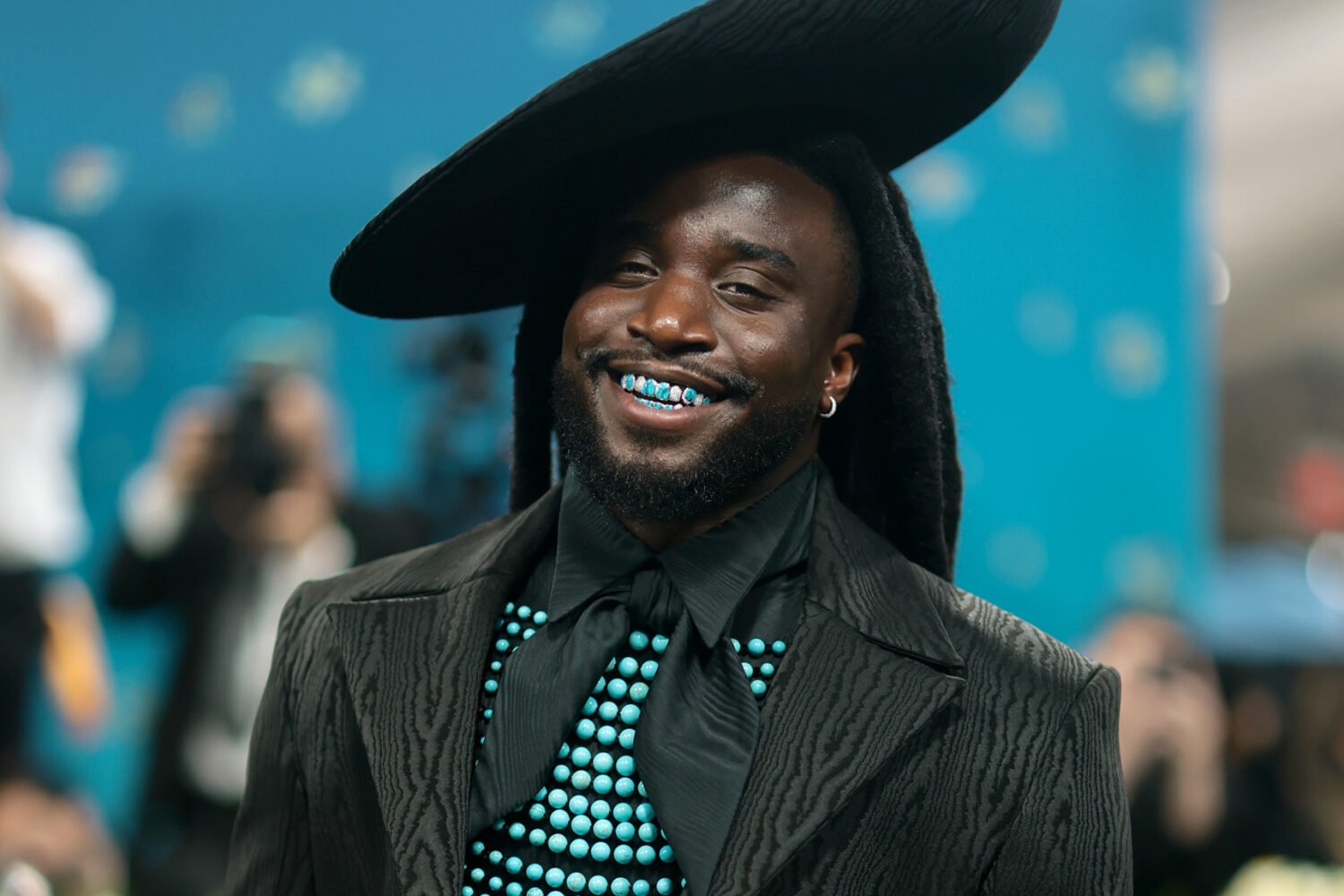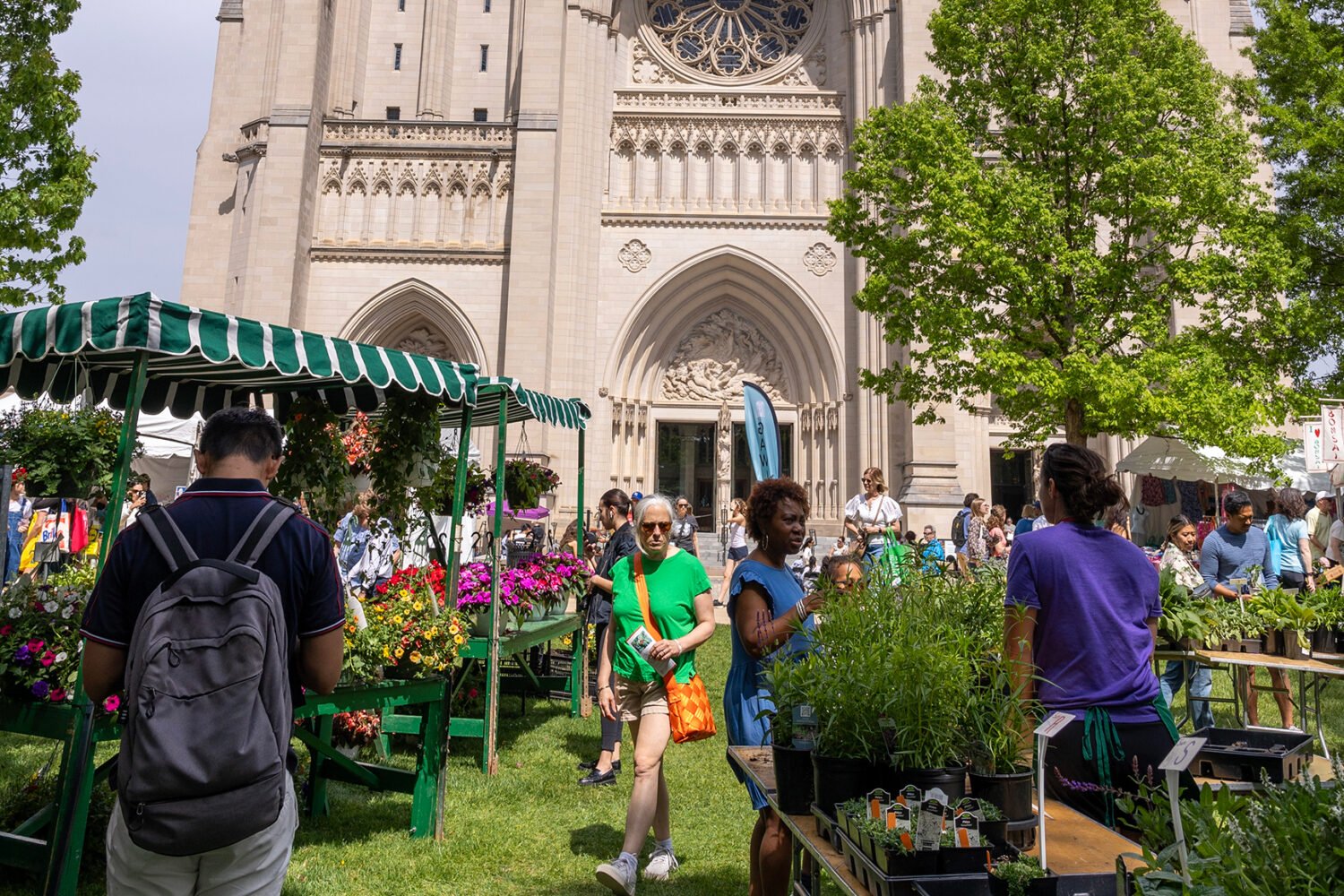Lately, kitchen designers have been deploying a particular combination of color, materials, and lighting that, once you know to look for it, is suddenly everywhere. Why does this recipe work so well? “Combining these elements makes the kitchen feel less like a kitchen and more like a beautiful room in the house,” says architect Anne Decker. Here, we break down the ingredients.
Moody Hues
Shades of gray, along with inky blues and dark greens, have become the new neutrals for a wave of homeowners who want their kitchens to convey warmth and sophistication—call it the Farrow & Ball effect. Deeper hues can make a space feel more intimate and cozy; it’s no wonder Decker described the warm gray palette of the Foxhall kitchen above to her client as “a cashmere blanket for the space.” Richer tones also work well with the trend toward more European-inspired kitchens, which mix cabinetry with freestanding furniture.
Brass Accents
To dress up cabinets, homeowners are turning to brass hardware and accents. For a Cathedral Heights kitchen—opposite, below—the clients fell in love with a particular shade of dark green for the cabinetry. “The brass hardware made a huge difference in making that color really pop,” says Elizabeth Saint Rain of Four Brothers Design & Build. Mixing metal finishes is an easy way to partake in the brass trend without a ton of risk—it’s not uncommon to use brass for cabinet pulls or light fixtures and use oil-rubbed bronze or polished nickel for the faucets.
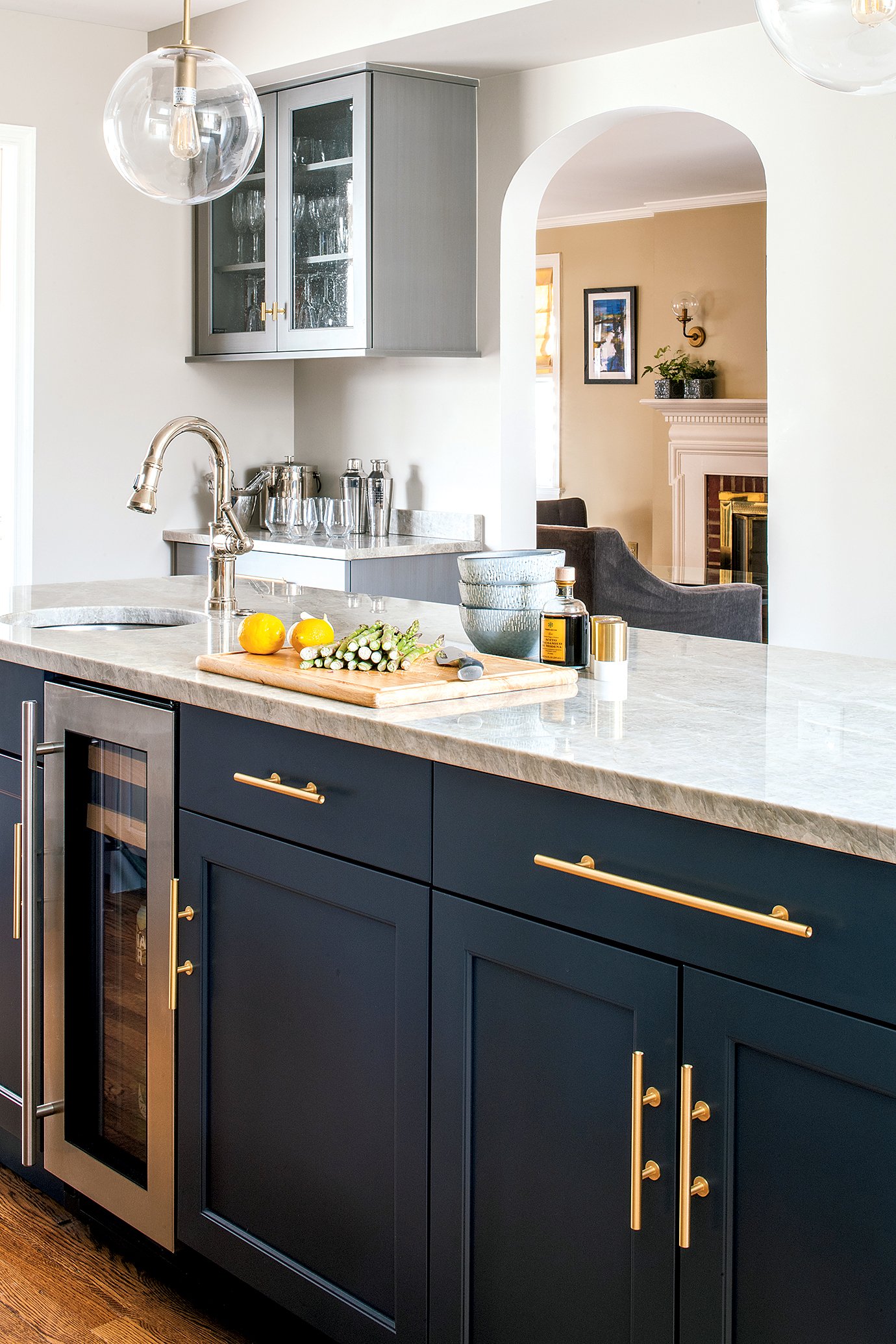
Round Lights
Because so many kitchen elements are boxy, a round light fixture can throw a much-needed curve into the mix. Globe-style pendants trace back to the early 20th century, when they often lit factory floors. Due to their long history and many variations, globes can convey belle époque elegance or midcentury cool—perfect for transitional kitchens, which blend traditional and more contemporary design elements. The best part? Globe lights are available at every price, making them ideal for a quick update when a full reno isn’t in the cards.
This article appears in the October 2019 issue of Washingtonian.

